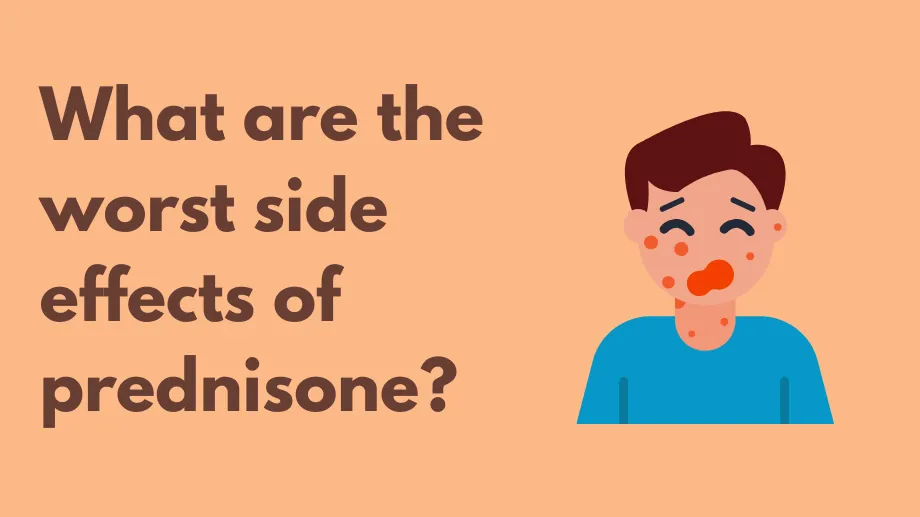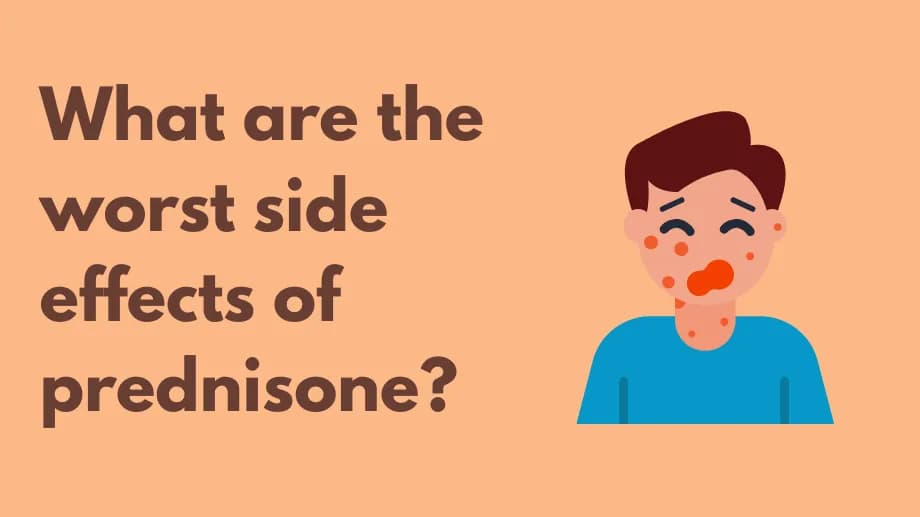What are the worst side effects of Prednisone?

Prednisone is a corticosteroid used to reduce inflammation and suppress the immune system in conditions like allergic reactions, lupus, rheumatoid arthritis, ulcerative colitis, multiple sclerosis, and more. Serious side effects are more likely with high doses or long‑term use (> 1 month).
Common short‑term side effects
- Increased appetite and weight gain
- Nausea and stomach irritation (take with food)
- Fluid retention and swelling (especially in feet, ankles, face)
- Elevated blood sugar (hyperglycemia)
- Mood changes, depression, or steroid‑induced psychosis
- Hot flashes and sweating
- Insomnia and restlessness (take earlier in the day)
Serious long‑term side effects
- Osteoporosis and increased fracture risk (bone density loss can begin within weeks)
- Adrenal insufficiency (fatigue, muscle weakness, dizziness, low BP)
- Cardiovascular issues: hypertension, heart failure exacerbation, irregular heartbeat
- Heightened infection risk and delayed wound healing
- Glaucoma and cataracts (risk increases > 10 mg/day for > 1 year)
- Peptic ulcers and GI bleeding (seek help if dark or bloody stools)
- Electrolyte imbalances: low potassium (muscle cramps, weakness), high sodium
How to reduce risk of complications
- Use the lowest effective dose
- Regular follow‑up: yearly exams, bone density scans, eye checks
- Monitor blood sugar (if diabetic or prediabetic) and blood pressure
- Discuss potassium supplements or a low‑salt, high‑potassium diet
Sources
- Liu D et al. Monitoring and management of systemic corticosteroid complications. Allergy, Asthma & Clinical Immunology (2013).
- McKay LI et al. Effects of corticosteroids. Holland‑Frei Cancer Medicine, 6th ed. (2003).
- Mebrahtu TF et al. Oral glucocorticoids and hypertension risk. CMAJ (2020).
- NHS. Side effects of prednisolone tablets and liquid. (2022).
